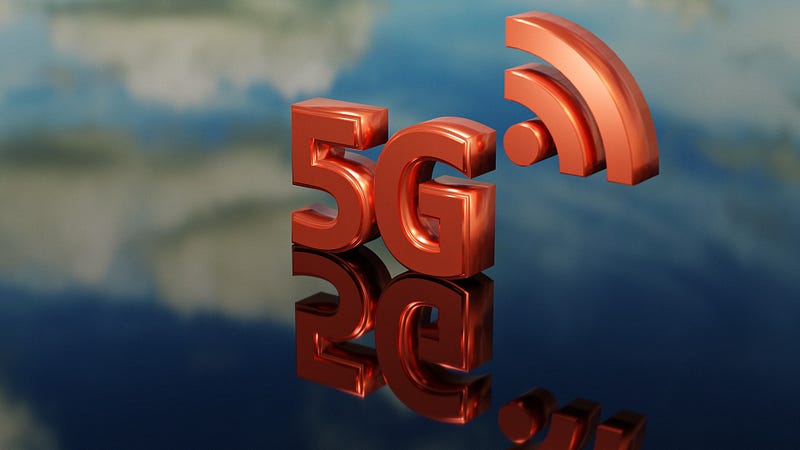Why 5G Might Be More Hype Than Reality: A Critical Look
Written on
Understanding the 5G Landscape
Don't be misled, dear readers. The differences between the top-tier versions of 4G LTE and 5G are minimal at best. The 6GHz variant of 5G, which is the only truly effective version, is nearly equivalent to the fastest 4G variations.
The real potential for speed lies in mmWave 5G, which is considered "true 5G," but this technology is impractical unless telecommunications companies install femtocells in nearly every city block. This makes it virtually unfeasible in rural areas.
The driving force behind the development of 5G was not necessarily to improve speed for consumers but rather to sell more mobile devices, erect additional 5G towers, and perpetuate economic growth. The constant push for GDP growth and mobile infrastructure is how the industry operates.
Section 1.1 The Physics Behind 5G Limitations
The reason that the 6GHz version of 5G feels like a minor upgrade to 4G, and why mmWave 5G is only viable in densely populated areas (assuming a significant number of small cells are installed), can be attributed to the immutable laws of physics.
These pesky natural laws often thwart grandiose plans devised in corporate boardrooms, as they don't adhere to human expectations. The 4G LTE protocol had a long lifespan, with numerous variants created that were more or less functional in real-world applications.
As a general rule, higher frequency (measured in GHz) correlates with greater speed due to the increased data encoding capability. However, raising the frequency results in a shorter range and weaker signal strength. In essence, "More GHz = faster = weaker."
Subsection 1.1.1 The Cap on 6GHz

The 6GHz cap exists for a reason; exceeding this frequency would render the technology nearly unusable. This is also true for the latest Wi-Fi protocol, Wi-Fi 6E (802.11ax v2), which also tops out at 6GHz.
If frequencies go higher, a direct line of sight becomes mandatory. Indeed, mmWave 5G, which operates between 24 to 47 GHz (with plans for expansion beyond 50 GHz), requires this direct line of sight for effective operation.
While mmWave technology is fast, its signal is extremely fragile, requiring optimal conditions to function, making it less practical for widespread use.
Section 1.2 Femtocells and Network Coverage
To effectively utilize mmWave 5G, every home and office in urban areas would ideally need a femtocell, potentially integrated with a Wi-Fi router. Mobile towers are less suited for mmWave but could still serve the 6GHz variant.
This setup could serve as a cost-effective means for telecom companies to extend mmWave coverage, especially in densely populated cities. While companies would bear the expense of mobile towers, customers would typically shoulder the cost of femtocells, which would be considered part of their residence or office.
A network based on this model would function through a mesh topology. Each femtocell would connect with its nearest counterparts, and if a landline connection were available, it could serve as a fallback during peak mobile network usage.
However, this system would only work when within range of a femtocell. Moving towards suburban areas would see a drop back to less than 6GHz, and if that coverage is not available, it would revert to 4G LTE, which is only marginally slower.
Chapter 2 The Limits of mmWave for LANs
The video titled "5G User Plane Redundancy - Mpirical - YouTube" explores the intricacies and limitations of 5G technology, delving into the misconceptions surrounding its capabilities.
When considering a high-speed LAN at home or in an office, mmWave 5G proves to be largely ineffective. Instead, there are two Wi-Fi protocols designed for this purpose: IEEE 802.11ad and IEEE 802.11ay, which can operate at frequencies up to 60 GHz.
The latter can achieve speeds of up to 20 Gbit/s, whereas mmWave can struggle to reach 1 Gbit/s in practical scenarios, with typical speeds around 600 Mbit/s (as reported by Verizon in 2022 in the U.S.).
The discussion above ignores the issue of data caps. Even in a hypothetical world where 50 GHz functioned like 5 GHz, strict data caps would still lead to faster consumption rates.
In conclusion, both 5G and the impending 6G are akin to the marketing tactics surrounding megapixels in cameras. Consumers have been conditioned to believe that "more is better."
More megapixels without larger sensors merely increase noise, leading to a surge in data without genuine improvements in quality. My experience in photography school has taught me this distinction well.
The only real utility of high megapixel cameras, such as the 108 MP model in my new Redmi Note 11S, is for situations requiring significant cropping. For instance, capturing distant celestial objects and then cropping images to achieve a larger view without losing quality.
I plan to document my experiences with this camera in an upcoming article, although light pollution in my city may limit my results.
That concludes this discussion, dear readers. I recognize that I did not have the space to cover the various encoding techniques that have been developed to maximize the efficiency of current frequencies without raising them further.
I look forward to potentially exploring these topics in a future article, where I can delve deeper into the general workings of wireless internet technology.

An article by Nikolaos Skordilis. If you found this analysis insightful, you may also enjoy this article about online security and privacy:
An Introduction to Tor Browser and the Dark Web | Part 1
Exploring the reasons for using Tor Browser and why Google disapproves of it so vehemently.
Additionally, I recommend this science fiction poem by William J. Spirdione:
A Cold Starry Snowy Way To Go
A poignant poem crafted in ottava rima.